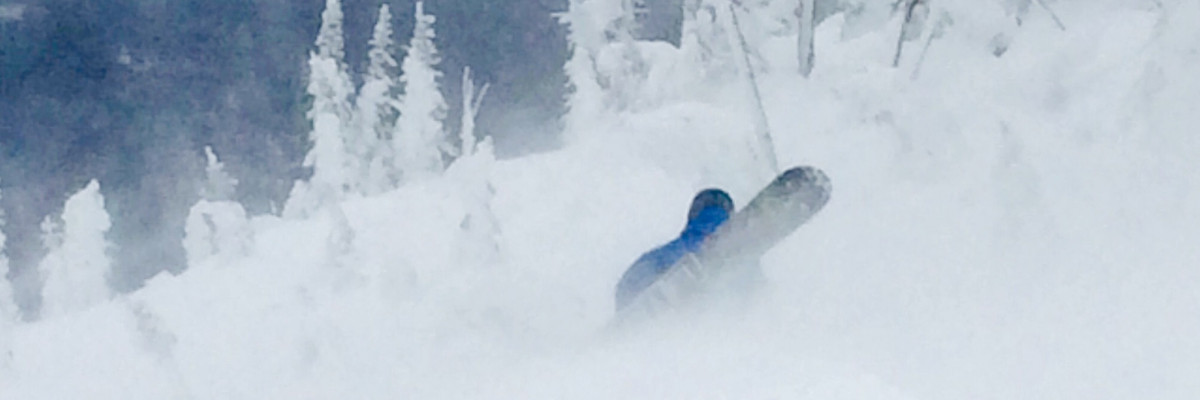On slopes above 6000 feet that are steeper than 30 degrees, the avalanche danger is considerable in the west central Montana backcountry. We have rescinded the avalanche warning issued Sunday afternoon; but snow and high winds have loaded steep slopes and human-triggered avalanches are still likely.
Good Morning, this is Dudley Improta with the west central Montana avalanche advisory for December 23, 2014. This danger rating does not apply to operating ski areas and expires at midnight tonight (Dec. 23).
Weather and Snowpack
Relatively nice weather is on tap for today. Mountain temperatures are ranging from 14 – 25 degrees F. West and southwest winds are blowing 11-14 mph and gusting into the 20 mph range. This will be short lived, as another storm is expected tonight.
Snow accompanied by high winds created dangerous avalanche conditions the past two days. Steve and I triggered remote avalanches Sunday and we received good observations from the public, reporting natural and triggered avalanches.
Yesterday we took a tour in the Rattlesnakes and our observations indicated the snow had settled out somewhat; but there were plenty of signs a slide could be triggered. We observed many natural releases that propagated up to 100 yards; and our snow pit tests showed the slab strengthening but retaining energy.
The Snowbowl Patrol was able to trigger a lot of activity with explosives. Cross-loaded southwest couloirs produced slab avalanches; with the most leeward areas seeing crowns up to 2 feet. Again, in the most leeward areas, they experienced extensive whoomphing, settlement and cracking.
I would expect the snow to be even more sensitive in the central and southern (Lost Trail Pass backcountry) Bitterroots because of the increased snow load in these areas over the past couple of days.
All this tells me, that although we may be past the crux of this cycle, instabilities in the snowpack can be triggered. I would tiptoe around for another day or two. That being said, more storms are on the way, and tiptoeing may be standard operating procedure for a while.
Weather Forecast and Avalanche Outlook
Brief high pressure will build into the area today. Another storm is expected to move through on Wednesday and Thursday. This storm may produce 6 to 8 inches of snow. Winds, mainly out of the west and southwest, will be less than what we have experienced; but still strong enough to move the new snow. I would expect the avalanche danger on steep terrain to remain elevated for the immediate future.
Steve will issue the next advisory on Boxing Day, 2014 (Friday). Ski and ride safe, have a great holiday.
Public observations can be important to the avalanche advisory and to riders and skiers. If you would like to send us snow observations use our public observations form or e-mail us at [email protected] .
















